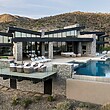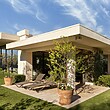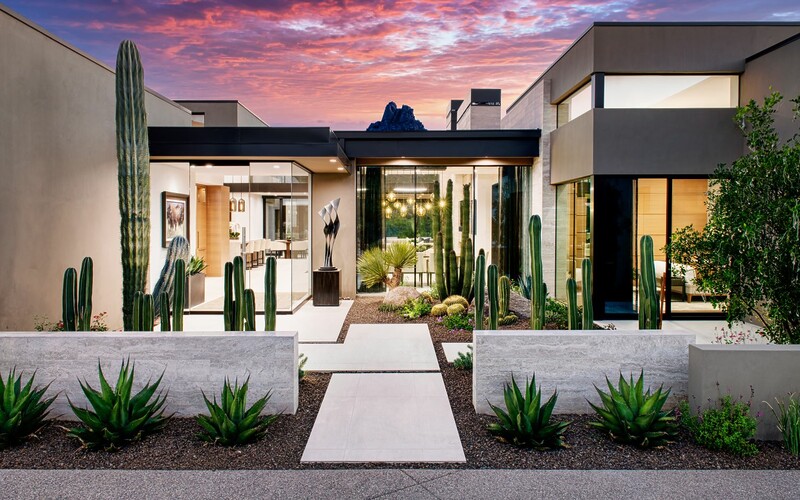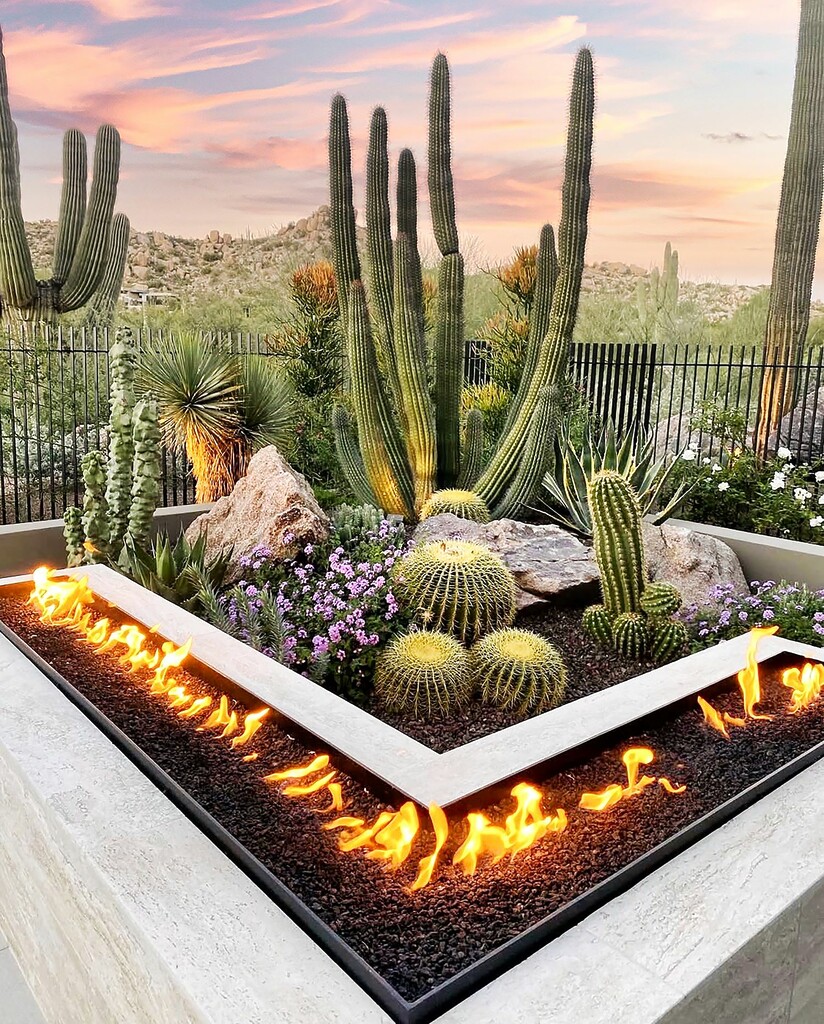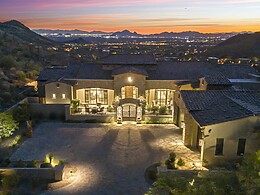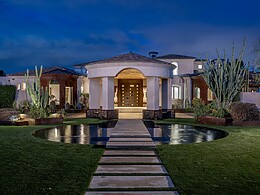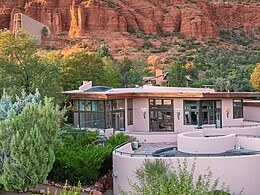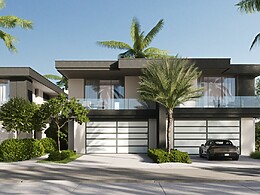In the sunbaked Southwest, where climate challenges meet architectural ambition, High Desert Designs stands at the intersection of art and ecology. Known for its sculptural, future-forward landscapes, the firm doesn’t just craft striking outdoor spaces—it commits to stewarding them for years to come.
Known for their elevated design language rooted in the rhythms of the Southwest, this Scottsdale-based firm, led by Chad Norris, approaches every space as both a visual composition and a long-term relationship.
“At the heart of every design,” Norris says, “is geometry: shapes and lines. Sometimes it’s the interiors, sometimes the neighborhood, but we always look at the external spaces when deciding the best layout.”
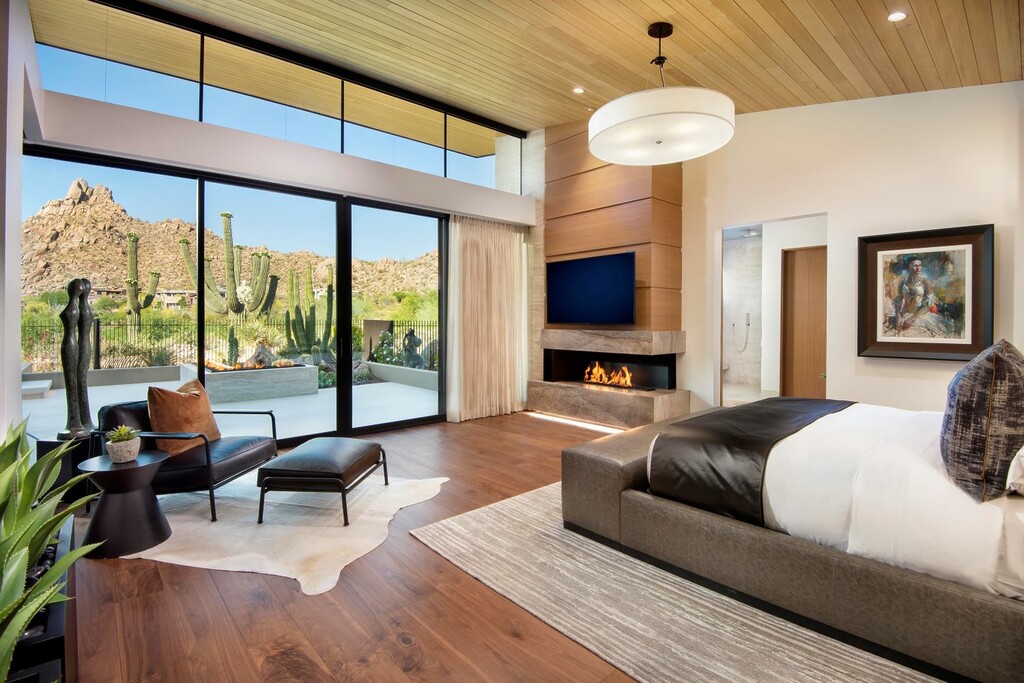
Contemporary homes often call for cleaner, more linear arrangements, while transitional spaces lend themselves to a combination of traditional and randomized groupings. “Then there’s the in-between,” he explains, “which has focal points of random arrangements and smaller, narrower transitional spaces that feel softer. That helps guide the landscape design.”
Built on a Visual Formula
While no two landscapes are alike, there’s a consistent foundation that guides each composition: verticality, spiky texture, and spherical forms. “Each focal point starts with those three things,” Norris says. “The centerpiece is the vertical element—maybe a cactus or Yucca Rostrata—flanked by spiky textures on either side, and softened with spherical forms like golden barrel cacti. Those create a well-balanced form.”
To build rhythm and dimension, High Desert Designs uses a thoughtful mix of cacti and succulents in varying colors and growth patterns. “We’re designing now for the future,” Norris adds. “We think about how things mature, how they’ll look in five years, and how not to let it all get too crowded. I’d rather use one big agave instead of three small ones. A single agave has a certain presence.”
Even as designs vary in layout and aesthetic, every project is rooted in symmetry and rhythm. “Whether it’s a focal point or a vignette, all the verticals may be different, but we always focus on the common thread throughout each of the areas to bring continuity. Layers, spikes, spheres. That’s how we see it evolve.”
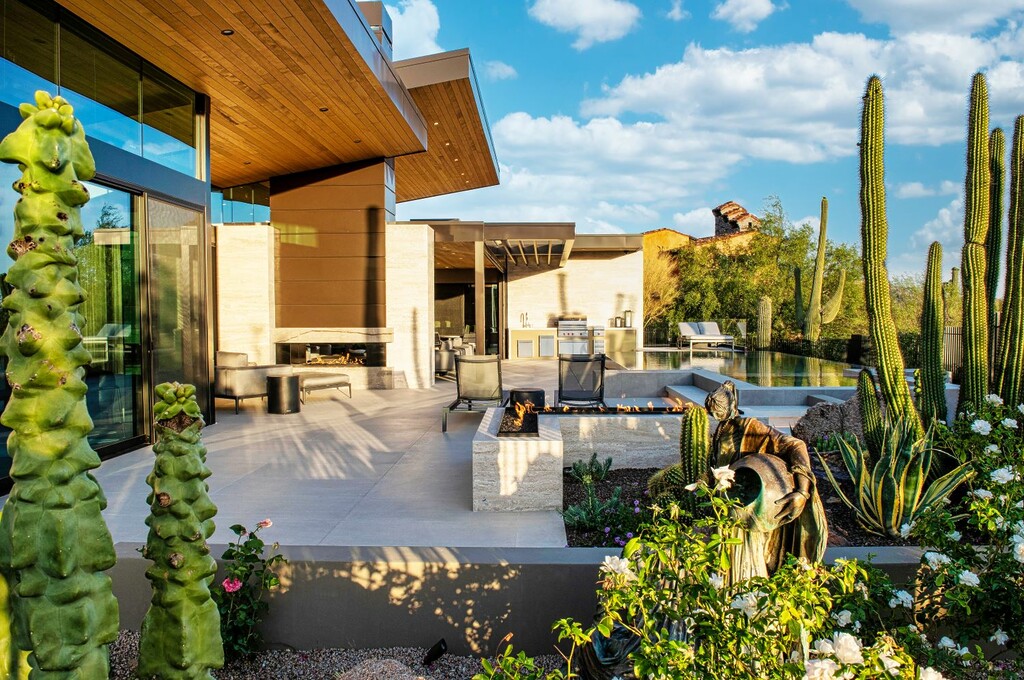
Texture, Contrast, and Shadow Play
One of the defining characteristics of a High Desert landscape is the contrast of soft versus hard textures.
“Whether it’s hardscape or landscape, we always combine softer elements along the edge of a hard surface before transitioning to the planting arrangement,” Norris explains. “We don’t overcrowd hard surfaces. It helps us stair-step the arrangement and gradually work our way to the centerpiece.”
The Riggs House is a standout example. With native saguaros dotting the horizon, the team selected an organ pipe cactus as the foreground centerpiece—its height echoing the distant desert giants. “It draws your eye through the space, into the view. That’s the kind of subtle storytelling we aim for,” Norris says. Even the firepit was elevated—not just for conversation, but to offer a layered perspective from every room in the house.
“During construction, I stood in the bedroom and office to study the sightlines. That’s how we sculpt for real life,” he continues. Even when using bold elements like cacti—often seen as “hard”—the base is softened with perennials or low-growing ground covers. “It’s about creating transitions, not visual roadblocks.”
Strategic placement is just as critical. Norris often places structured, architectural plants like fence post cactus or yucca in front of solid walls, especially once clad in a stone or architectural detail—not to hide them, but to accentuate them.
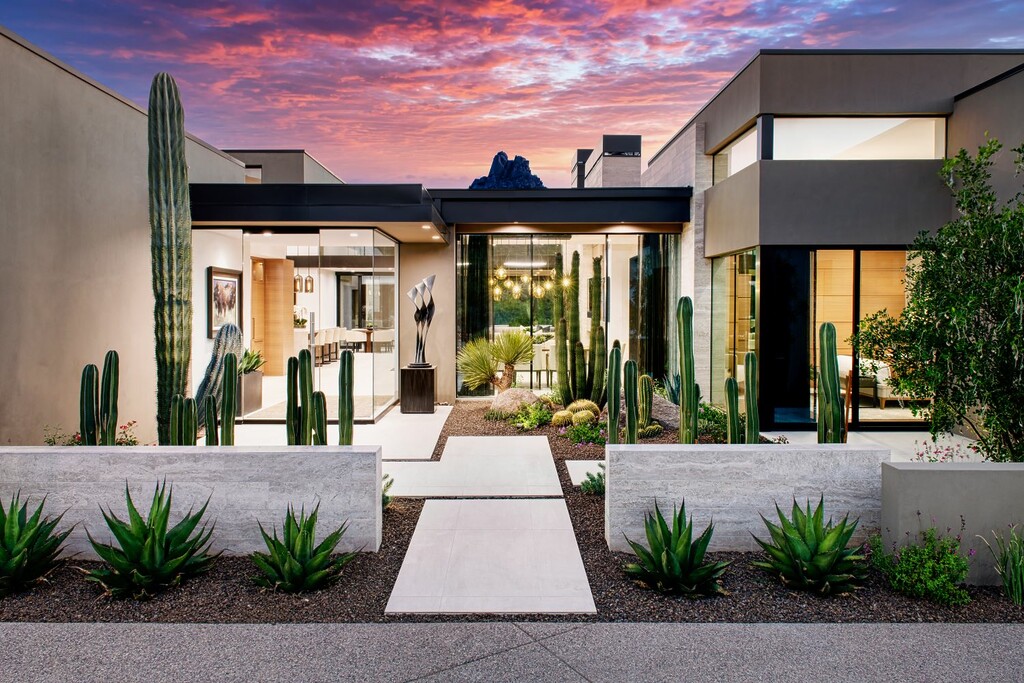
“Organic growth against architectural forms allows for shadowing—texture that highlights rather than blocks. You don’t want to put a big tree in front of the architecture and obscure the view. Instead, you use something structured that casts light and shadow in an intentional way.”
And then, there’s the transformation that happens after dark. “One of the coolest things about landscape design is the daytime and nighttime versions,” Norris says. “Nighttime is more impactful because your eye is drawn to just the feature elements. You don’t want your whole yard to light up like a room inside your house. We just want to accentuate the special features.”
Steel or ceramic planters often play a starring role in that nighttime effect. “They’re the throw pillows of the landscape,” he says. “Some contemporary homes call for steel planters to match the door or window frames. They’re custom-designed, decorative, and practical. Raised steel beds add an aesthetic flair.”
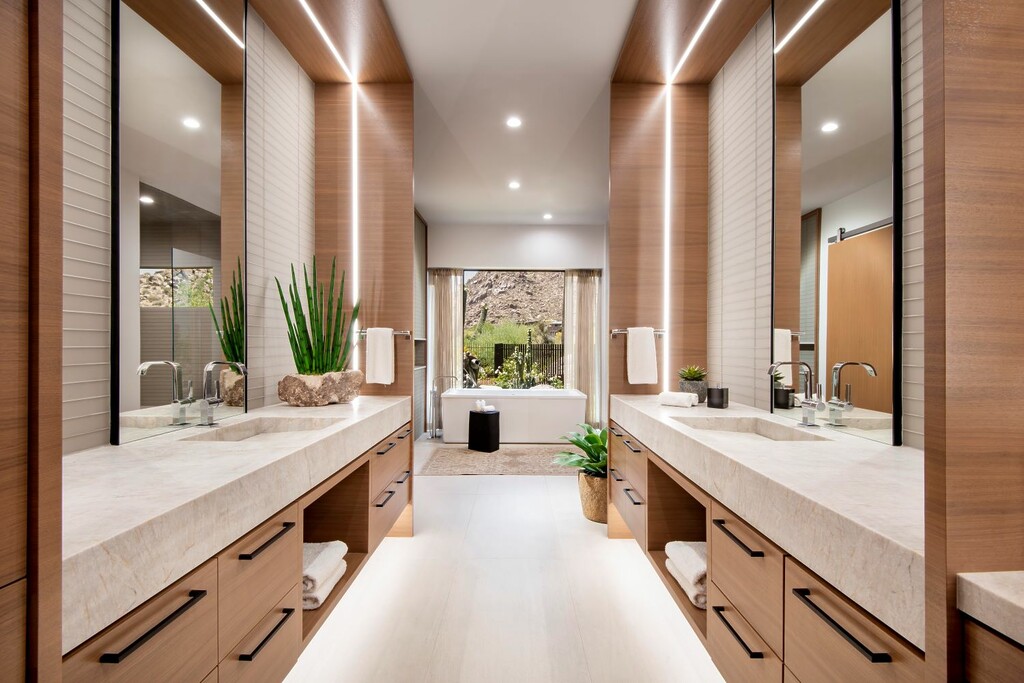
Designed to Endure
More than anything, what sets High Desert Designs apart is its philosophy of ongoing stewardship. “Why do people keep us on? Because we look at maintenance through the same lens as the design,” Norris says. “It’s about maintaining that expectation through the years to follow. It’s the start of a relationship.”
Landscapes are living environments, and Norris is candid about the realities of time. “As things die throughout the year, we remind clients this isn’t a one-and-done thing. Plants don’t always die for a reason. The design needs touch-ups and replacements. That’s just part of the life of the landscape.”
From geometry to shadow play, from steel planters to golden barrels, High Desert Designs isn’t simply curating outdoor space—they’re building living sculptures. With every layer, every line, and every thoughtful replacement, they’re making the desert not only beautiful but enduring —evolving, responding, and refining over time. Sculpting the desert, after all, means working with it. And High Desert Designs has made that their art. Learn more at highdesertdesigns.com.



